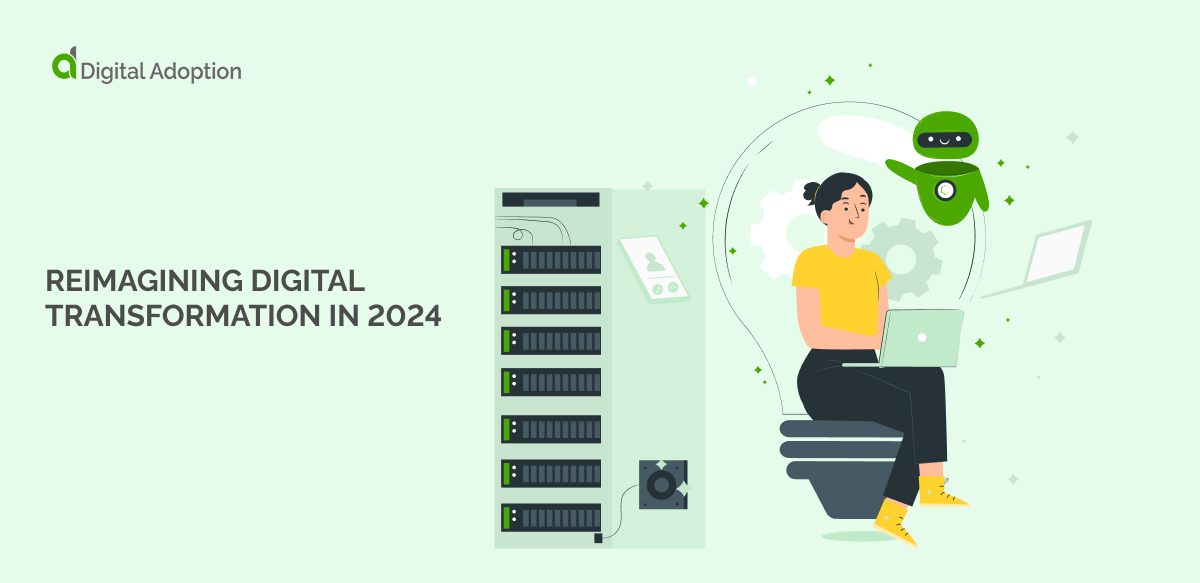As we look ahead, it’s clear that digital transformation will continue to be a top business priority.
In a recent survey, Deloitte found that companies with higher digital maturity reported 45% revenue growth. And as technology improves, so does the rate of innovation.
Engaging in digital transformation efforts as a business is like entering a race you know will never end.
We can’t tell you where the finish line is (because there isn’t one), but we can at least illuminate the track immediately ahead.
In this article, we’ll take a closer look at how digital transformation will likely evolve over the next few years and explore some of the opportunities businesses will have to adopt emerging technologies into their business models.
We’re going to mention several technologies. Some of them are mature enough to be next on your list of digital transformation initiatives.
Others are in their infancy but are worth keeping an eye on.
- Why Reimagine Digital Transformation?
- Using Existing Industry Cloud Solutions to Level Up Your Digital Transformation
- Reimagine Business Processes with Emerging Technologies
- Unlocking Innovation through Digital Transformation
- Streamlining Operations with New AI Tools
- Supercharging Customer Experience Through Digital Transformation
- Ensuring Security and Privacy with Digital Transformation
- The Threat to Digital Transformation: Business and IT Leaders Hate Change
- A Bright Future for Digital Transformation?
Why Reimagine Digital Transformation?
Digital transformation is not simply acquiring new technology and expecting it to revolutionize operations.
Yes, it requires goals, strategy, and assessment— that’s what we all understand.
What many business leaders miss, though, is that digital transformation doesn’t have to be achieved through technology. It can be defined by resilient operational changes like creating integrated systems, robust infrastructure, and a culture that fosters change.
To help color this point, let’s look at some common, high-level goals of digital transformation and drill into how emerging technologies can be used to approach them from a different angle.
Using Existing Industry Cloud Solutions to Level Up Your Digital Transformation
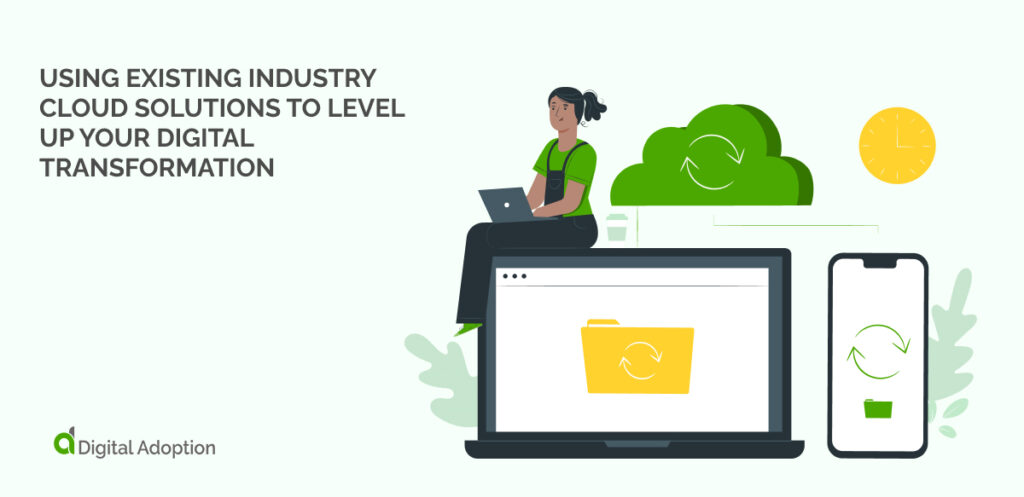
First, let’s look at the emerging technology that’s leading the pack and is likely to underpin all near-future digital transformation efforts: Industry cloud platforms.
These cloud services are optimized for the most common industry uses. They’re a collection of industry-specific digital solutions where you can pick and choose what you want to use.
Businesses that share an industry probably share some industry-specific functionality, and so could share some industry-specific cloud applications. They could all use industry cloud services to create adaptive solutions efficiently.
They can do this by using modular “building blocks” of packaged business capabilities, allowing them to combine components from multiple software providers for a customized solution that fits their needs.
These modular technology capabilities receive continuous innovation investment from the cloud provider, which means your core processes are always being improved with no additional effort from you.
Industry cloud’s prebuilt services allow you to create a continuously evolving digital core for your critical business initiatives. You can then customize the processes you layer on top of that core.
This way, you can create unique solutions that can be deployed immediately. That means faster digital transformation. It means faster and more seamless adoption of emerging technologies.
You still have options if there isn’t an industry cloud platform that fits your requirements. Since they’re an emerging technology, many cloud providers are working with businesses to build industry cloud solutions that don’t exist yet.
As a result of this industry cloud partnership model, we’ll see innovators who embrace industry cloud define and create industry cloud capabilities, paving the way for later adopters.
And it doesn’t stop there.
The next stage in the cloud platform evolution line is “industry cloud ecosystems,” AKA “ecosystem clouds.”
Cloud service providers recognize that different vertical industries can share certain processes and challenges. For example, healthcare companies and insurance providers aren’t in the same industry but are in the same ecosystem— future industry clouds address this similarity.
In this fashion, future enterprises could leverage industry clouds to engage in connected enterprise business planning.
The ecosystem business model will open up new business possibilities and provide even greater opportunities for innovation and growth.
Regarding technologies mentioned in this article, the industry cloud platform business model is already being widely adopted. Gartner found that 70% of business consumers were considering the deployment of industry clouds by 2026.
Should you be diving into the industry cloud market to watch for or co-creating viable industry clouds?
Now let’s look at emerging technologies that are a little further afield and perhaps a little more tenuous.
Reimagine Business Processes with Emerging Technologies
How can emerging technologies be used to completely reimagine core processes so they align with more futuristic values?
Decentralize Solutions with Web3
Web3 is a platform for decentralized applications. It offers businesses to “connect the dots” in a transformation context.
If you think of traditional businesses as a collection of islands— these are siloed processes— then digital transformation helps you build bridges between the islands.
Web3, though, reimagines the whole structure of a business so that rather than a collection of islands, it’s more like a web.
Solutions and service providers become just nodes on the web. This would facilitate enterprise collaboration, enable business agility, and improve an organization’s ability to reconfigure the business.
It enables organizations to experiment with completely new business models.
Sustainability At the Core
As well as decentralization, sustainability is set to be a core value of digital-first business models in the future.
Cloud is inherently more sustainable than on-premise solutions because you don’t have to own hardware. A cloud provider maintaining large-scale digital platforms which other businesses can tap into is much more efficient, higher value, and more sustainable.
But “sustainable cloud” is an emerging technology that takes this further by putting sustainability at the core of cloud-enabled business solutions.
You could make major changes to the sustainability of your own business by leveraging sustainable cloud technology.
Unlocking Innovation through Digital Transformation
As we mentioned, it’s not just technology that can help you unlock innovation through digital transformation. It’s people too.
Internal talent markets are a new technology platform that helps businesses match the right employees to specific projects and roles.
These platforms also improve collaboration by making it easier for workers to find and share ideas. They also provide more accurate data, enabling organizations to make better recruiting decisions faster.
They enable companies to create an internal hiring marketplace where they can quickly shift internal resources and match the right talent with the right projects.
This helps organizations tap into their own employee base for innovation and retain talented workers who might otherwise have been lost to the market.
Internal talent marketplaces help organizations accelerate development while also improving employee engagement.
Streamlining Operations with New AI Tools
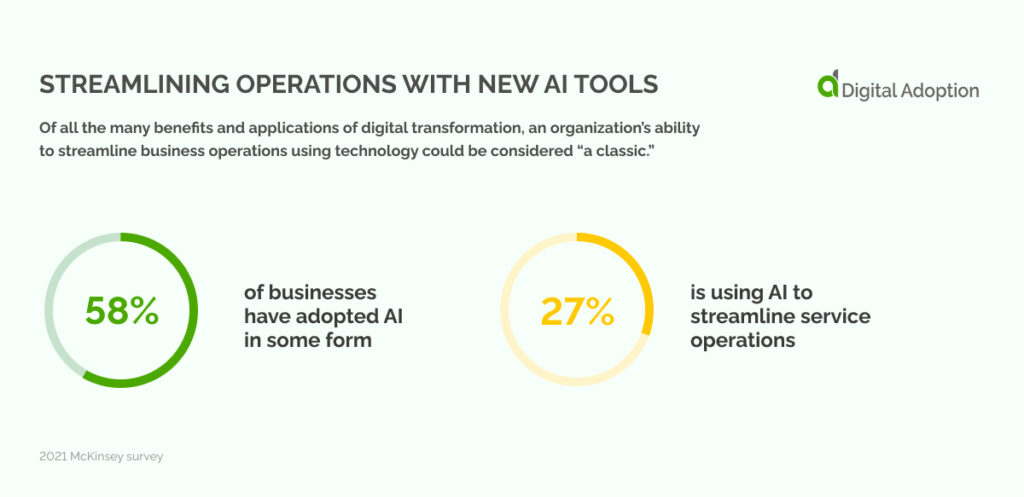
Of all the many benefits and applications of digital transformation, an organization’s ability to streamline business operations using technology could be considered “a classic.”
A 2021 McKinsey survey found that 57% of businesses have adopted AI in some form. And the largest share of those adoptees (27%) is using AI to streamline service operations.
This particular use case seems to be common knowledge, and any businesses that aren’t already implementing AI should explore how it could fit into their business models.
But what’s the next step in using AI to streamline business operations?
Here are a couple of emerging technologies that are building upon this already solid foundation:
Causal AI
It is a type of artificial intelligence that uses cause-and-effect logic to improve decision-making. This technology automates decision-making processes, making them faster and more accurate and enabling strategic transformation.
The Inherent Problem describes how the biggest waste of time in an organization is the requirement of leadership to approve decisions— could causal AI be the solution?
Causal AI could speed up the process of business strategy transformation, helping businesses to adapt to rapidly changing markets and customer needs.
Dynamic Risk Governance
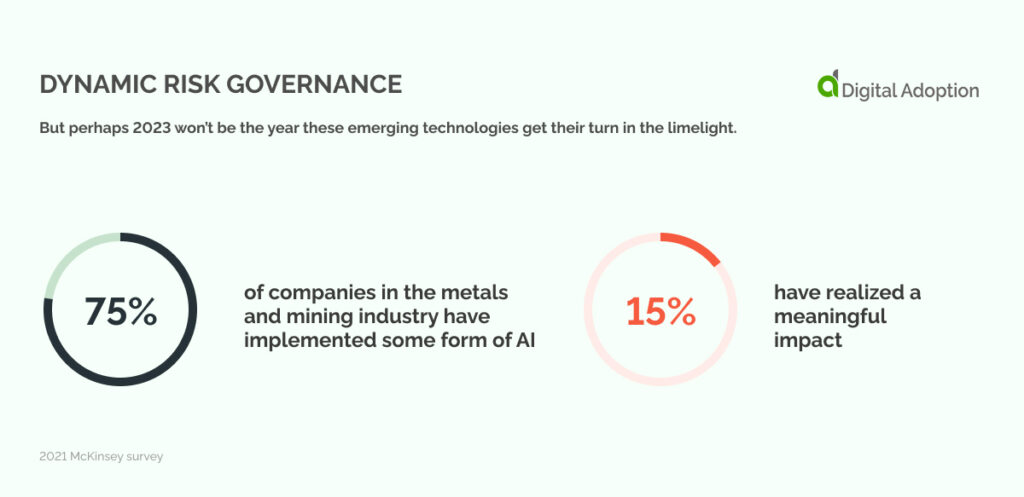
Another technology that streamlines operations by helping businesses assess, prioritize and act on risks quickly.
Dynamic Risk Governance can detect potential risks, determine a business’s appetite for risk, and suggest a suitable approach. This is a major innovation in the risk management field, and most importantly, this kind of tech can be applied to almost any industry, from financial services to healthcare.
Another McKinsey report found that while 75% of companies in the metals and mining industry have implemented some form of AI, less than 15% have realized a meaningful impact.
This implies that businesses will focus on optimizing their existing AI tools in the near future.
Supercharging Customer Experience Through Digital Transformation
Customer experience is the #1 driver for businesses creating a digital transformation strategy.
PWC recently surveyed 1250 company leaders and found that nearly half of the organizations cited customer experience and satisfaction as leading influences on their digital transformation efforts.
By focusing on customer experience, businesses create more engaged customers and collect more high-quality data, which can be used to enhance digital apps even further.
But which emerging technologies aim to take customer experience to the next level?
Digital Human AI
Sure, AI chatbots are cool. They’re all the rage right now.
However, one of the biggest friction points for businesses looking to deploy AI chatbots is that customers value the human touch.
Digital Human technology is a kind of AI that simulates human conversation and empathy. It could be the answer to that problem.
Digital Human AI is capable of understanding customers’ emotions and responding accordingly. It also understands body language, so if given an avatar through augmented and virtual reality technology, Digital Human AI can read and react with non-verbal communication.
This creates an experience that feels more natural and personal than traditional AI interactions. It restores the human touch.
Digital Twin
A digital twin is a virtual replica of a physical product, service, or process that can be used to analyze performance and predict future outcomes.
One way you could apply this technology is to create a digital twin of a customer. This virtual representation can be used to analyze potential customer behaviors and decisions.
It can also be extended from a single customer to a group of customers.
Digital twin technology is a forerunner of the predictive analytics movement.
Ensuring Security and Privacy with Digital Transformation
As you advance digital transformation, it’s important not to let security be an afterthought.
Security concerns are often a drag on digital strategy, so we will touch on two emerging technologies that could help businesses reinforce their security measures in a futuristic way.
Cybersecurity Mesh Architecture (CSMA)
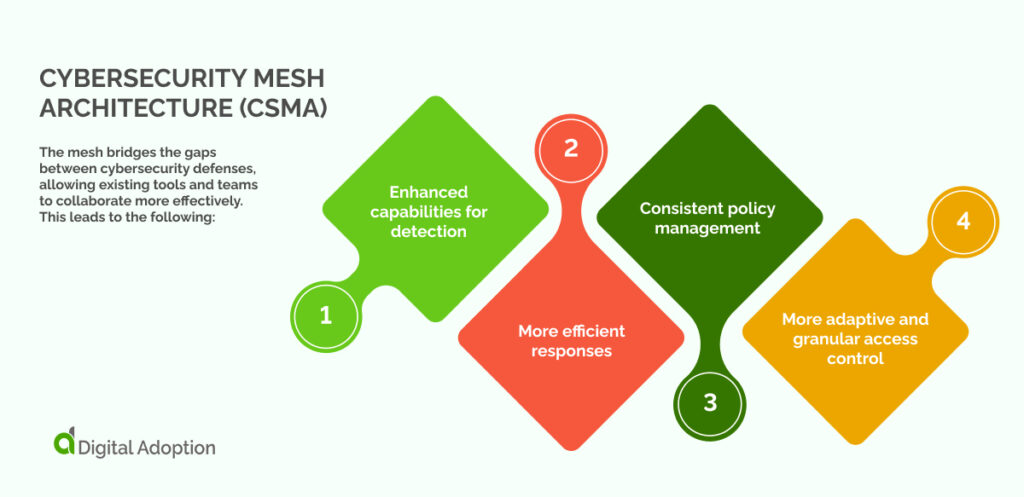
Cybersecurity mesh is a network of interconnected devices and services to protect against malicious attacks. It works by continuously monitoring the security of each device on the network, and if it detects any suspicious activity, it takes action accordingly.
The mesh bridges the gaps between cybersecurity defenses, allowing existing tools and teams to collaborate more effectively. This leads to the following:
● Enhanced capabilities for detection
● More efficient responses
● Consistent policy management
● More adaptive and granular access control
All of which leads to better security.
Decentralized Identity
Once again emphasizing that decentralization is a core value of the future, decentralized identity technology shows how blockchain can give users more privacy and security.
With decentralized identity technology, issuers provide fraud-proof identity credentials to users who own and manage those credentials.
Verifying organizations can check whether these credentials are authentic— and they can do so instantly without contacting the issuer.
This could provide a smoother experience to users who value security since they won’t have to wait and won’t need clunky methods like two-factor authentication.
It’s also beneficial for businesses no longer responsible for storing and securing user data.
The Threat to Digital Transformation: Business and IT Leaders Hate Change
Let’s take a break from talking about technology to consider one of the biggest non-technological barriers to digital transformation: The natural aversion to change.
Here’s a quote from a Chief Digital Officer speaking to the World Economic Forum.
“It’s less about digital than transformation. And transformation is not welcome anywhere because it’s a big change. Nobody wants to change because you are changing ways of working, behaviors, and sometimes territories. Fear is a very important component of our role. People fear change.”
This highlights the disconnect between the “dream” of digital transformation and the realities that come with organizational change. In many organizations, a rift between business and technology functions must be bridged.
Reimagining digital transformation in this way is sobering. And it’s a lens that many businesses would benefit from looking through. Otherwise, they’ll again be setting up digital transformation initiatives to fail.
A Bright Future for Digital Transformation?
It looks like digital transformation is about to have another great year.
AI is already all the rage, and Web3 projects are never far from the front-page headlines.
But even in this innovation-rich time, progress waits for nobody. New and ingenious technologies are on the horizon and quickly approaching that will challenge how we do business.
If you want to use digital transformation to push for a further competitive edge, you need to monitor how trends are developing.
Regarding digital transformation, it’s no longer a question of whether you should.
It’s a question of how you should.

